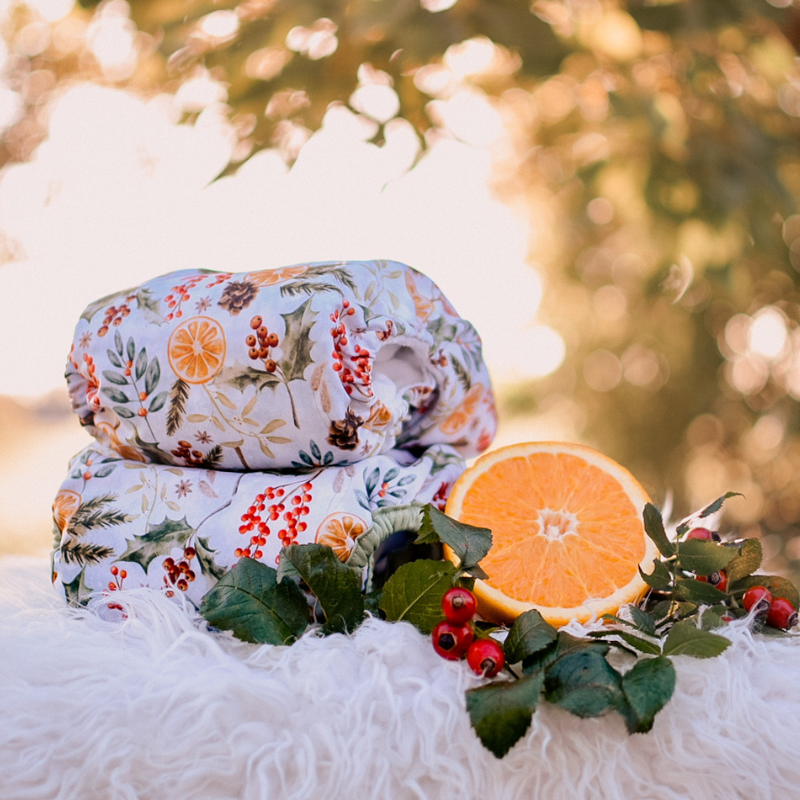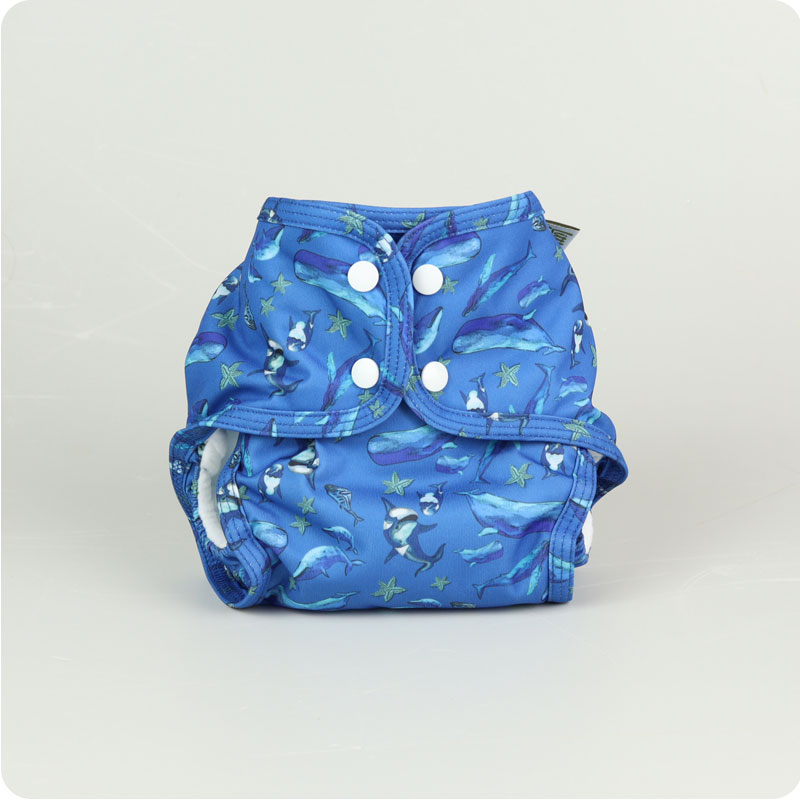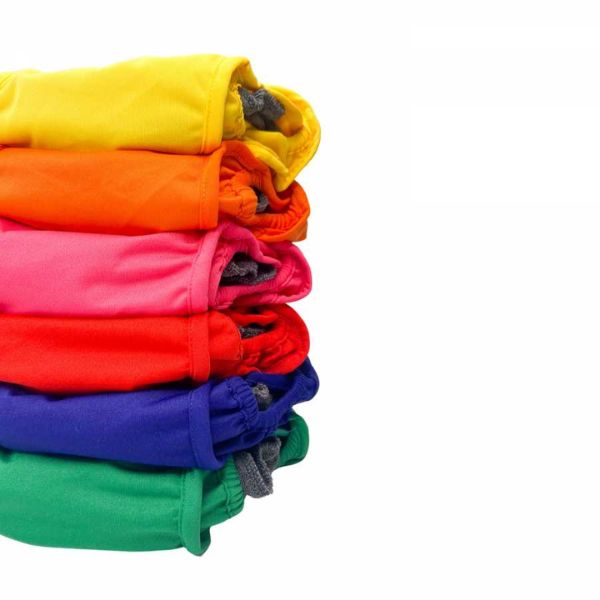How to Dry Reusable Nappies
Drying reusable nappies properly is crucial to their longevity and effectiveness, but it can be tricky to get your nappies dried alongside all the other family washing - especially in the colder months.
Whether damp weather or lack of space is your challenge, finding the right drying method makes a HUGE difference.
Here at The Nappy Gurus we've been all about reusable nappies since way back in 2004 when I first started using them on my eldest son. After using them on all four babies who were heavy wetters (and having two in nappies at the same time for a big chunk of that) I've washed and dried a LOT of nappies.
In this post, we’ll answer your top questions about drying nappies and share our best tips so you can effectively dry your nappies at home, no matter the season.
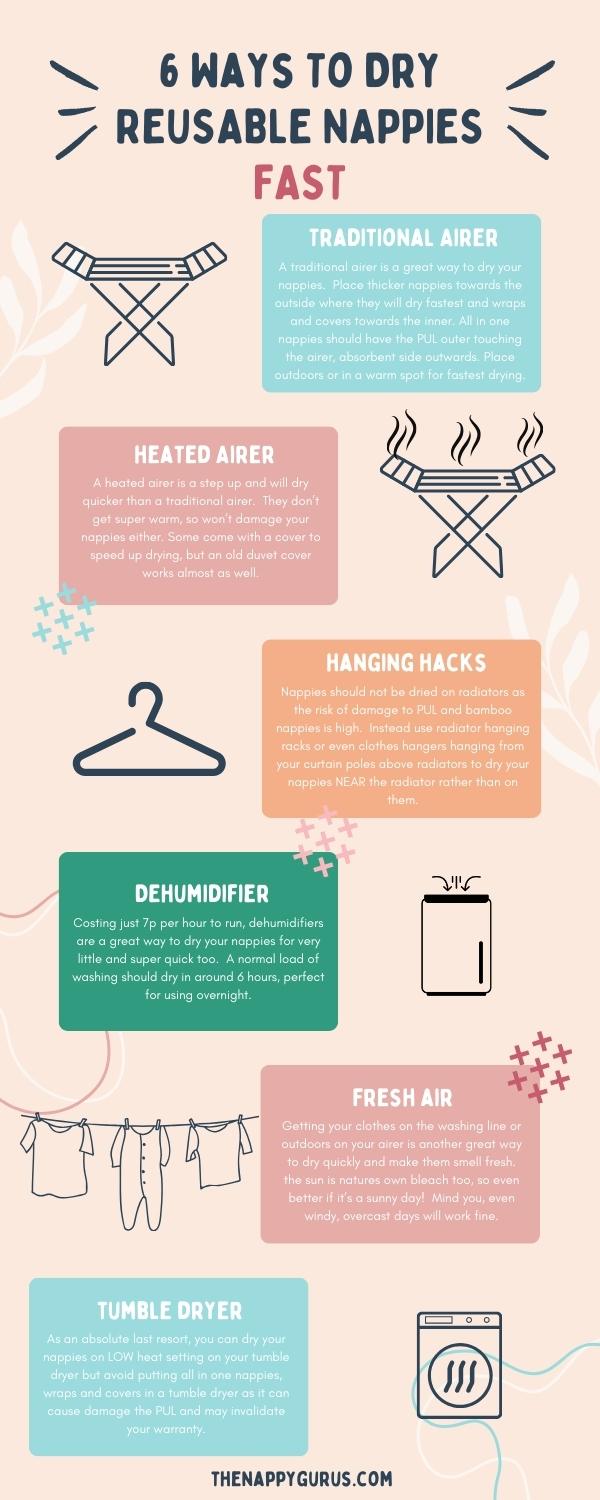
The Best Ways to Dry Your Nappies
Drying your reusable nappies efficiently not only saves you time but also ensures they remain in great condition. It's possible to damage your nappies and PUL wraps or outers, particularly some more delicate nappy fabrics like bamboo, if you dry them incorrectly.
Top Tip: Put the thicker items on the outside of your airer / or nearer the heat source as they will dry quickest.
Here are the best ways to dry your nappies:
Traditional Airer
How it works: Simply hang your nappies over the rods of a traditional airer. Either a floor standing airer, or one which hangs from your ceiling as this doesn't compromise the floor space wherever you're drying your clothes. A clothes airer can also be used inside or outside (for example if you have a balcony).
Pros: This method is energy-efficient and gentle on the nappies.
Cons: It can take longer and creates humidity in the house which can cause mould if it builds up. Can also take a long time in cold conditions, and requires enough indoor space.
Heated Airer
Heated airers are similar to traditional airers but with built-in heating elements. They still dry relatively gently and some come with covers to make drying even faster by trapping in the heat (although using an old duvet cover will act in a similar way).
Pros: Faster drying times and still relatively energy-efficient, these are a good option if you have space for one. If you have an energy tariff which is cheaper overnight, this could be an extremely cheap drying option. At 'normal' energy rates, these cost roughly 10p per hour to run.
Cons: Higher energy use than non-heated airers and could potentially be harsher on the fabric if used improperly.
Near Radiators
Placing nappies on a drying rail that sits on your radiator speeds up the drying process. An alternative to this is hanging your nappies off clothes hangars or a 'socktopus' on a curtain rail above a radiator if that is possible...you can get a LOT of nappies dried this way!
It's important to note again that nappiees shouldn't be dried directly ON a radiator, just near it. The combo of some enzymes in washing powder (cellulase) plus heat can literally eat some bamboo fabrics!
Pros: Pretty quick drying times and convenient during winter.
Cons: Direct heat can stress the fabric, and you could end up with nappies with bald patches!
Dehumidifier
Using a dehumidifier in the room where your nappies are air-drying can significantly speed up the process. We have one similar to this and it's amazing how quickly it can extract 5litres of water from your washing! Best of all, it costs just 3.8p per hour to run. Thicker nappies, like night nappies may still take a little longer to dry.
Pros: Efficient and effective, particularly in damp conditions.
Cons: Requires an initial investment and some running costs.
Make The Most of Sunny Or Windy Days
Whenever possible, drying your nappies outdoors in sunlight is best. It's free and generally quick, except on those very cold, still winter days! This doesn't just mean line drying, drying outside on an airer will get your nappies dried quicker too.
Pros: Sunlight naturally sanitizes the fabric and helps remove stains. Leaves nappies smelling great!
Cons: Weather-dependent and requires outdoor drying space.
Can I Use a Heated Airer for My Cloth Nappies?
Yes, you can use a heated airer to dry cloth nappies. However, to prevent damage to the fabric, avoid placing the nappies directly against the heating bars. Instead, lay a tea towel or fleece liners over the airer and place the nappies on top of it. This method reduces the risk of overheating and fabric wear.
Can You Tumble Dry Reusable Nappies?
Yes, but with caution. Reusable nappies can be dried in a tumble dryer on a low heat setting. Avoid using medium or high heat as it can damage the materials and reduce the nappies' absorbency over time.
What Nappies Dry the Fastest?
Pocket nappies, fitted nappies and two part nappies will dry fastest as the shell can be separated from the absorbent parts / boosters etc. Terry squares also dry quickly as they are large flat squares which can be totally unfolded for fast drying. Read our article on the types of cloth nappies for more information.
Sized nappies also dry relatively quickly as you aren't drying extra bulk you don't need.
The drying speed of reusable nappies also varies depending on the material.
Microfiber nappies tend to dry the fastest, while nappies with natural fibres like bamboo or hemp dry slower due to their denser composition. If drying time is a concern, opting for a faster-drying material might be your best choice.
Recommended Fast Drying Cloth Nappies
Drying your reusable nappies efficiently is key to maintaining their quality and ensuring they’re ready for use when you need them. Experiment with different drying methods to find what works best for your space and climate. For more tips on choosing and caring for reusable nappies, visit our comprehensive cloth nappy guide or explore how to choose a great reusable nappy. Have questions or tips to share? Drop us a line. The team have all used cloth nappies themselves and love to share their wealth of helpful experience!
We hope you enjoyed this article. If you did, you may find these articles useful too:
- What's the difference between nappy inserts, boosters and liners
- Best nappies for newborns
- Nappy wraps and covers: Everything you need to know
About the Author: Helen Rankin, an advocate for sustainable living, embarked on her journey with reusable products when her first child was born in 2004. Facing limited options in cloth nappies, Helen’s passion only grew, leading her to launch Cheeky Wipes in 2008, right before welcoming her third child.
Helen's commitment to promoting sustainable solutions led to her taking over The Nappy Gurus in 2024. Today, she is excited to share her extensive knowledge and enthusiasm for all things reusable, helping a new generation of parents navigate eco-friendly choices for their children.
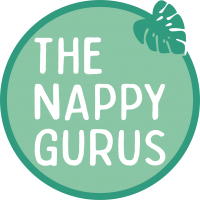

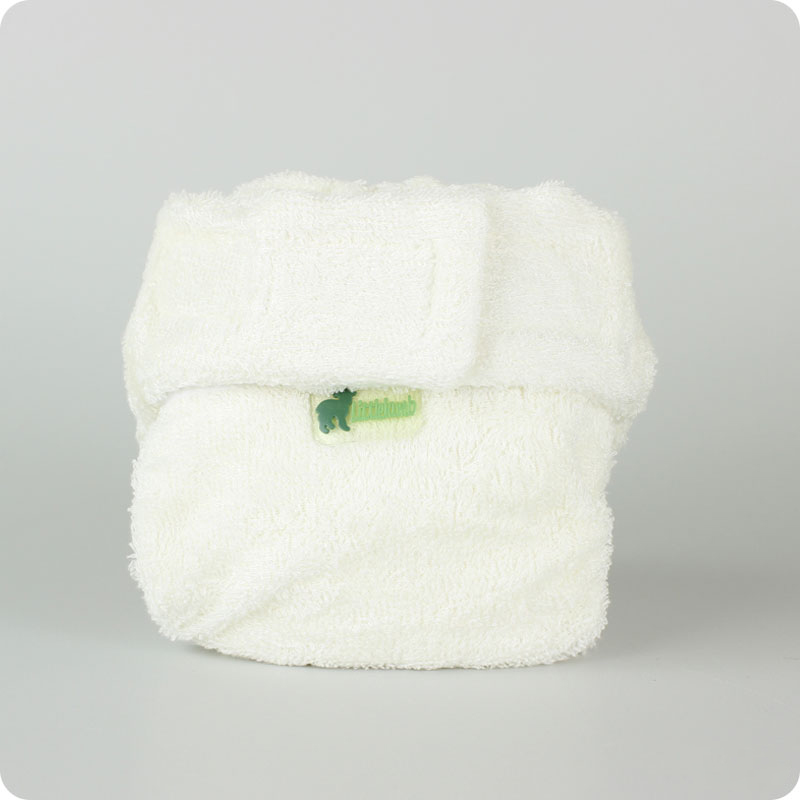
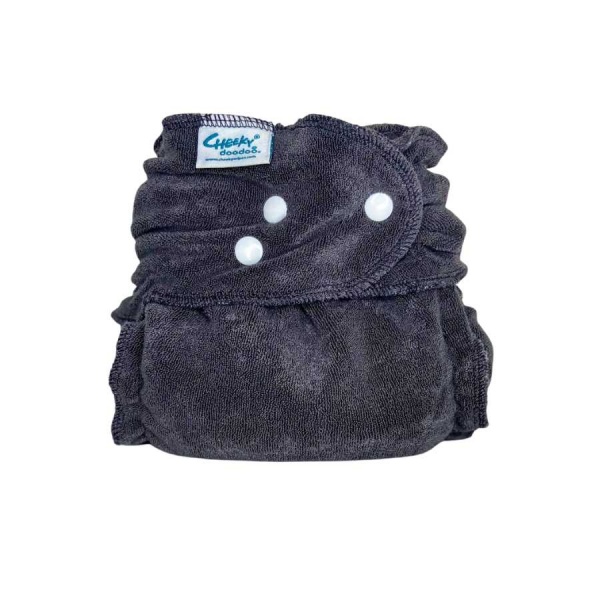
.jpg)
.jpg)
.jpg)
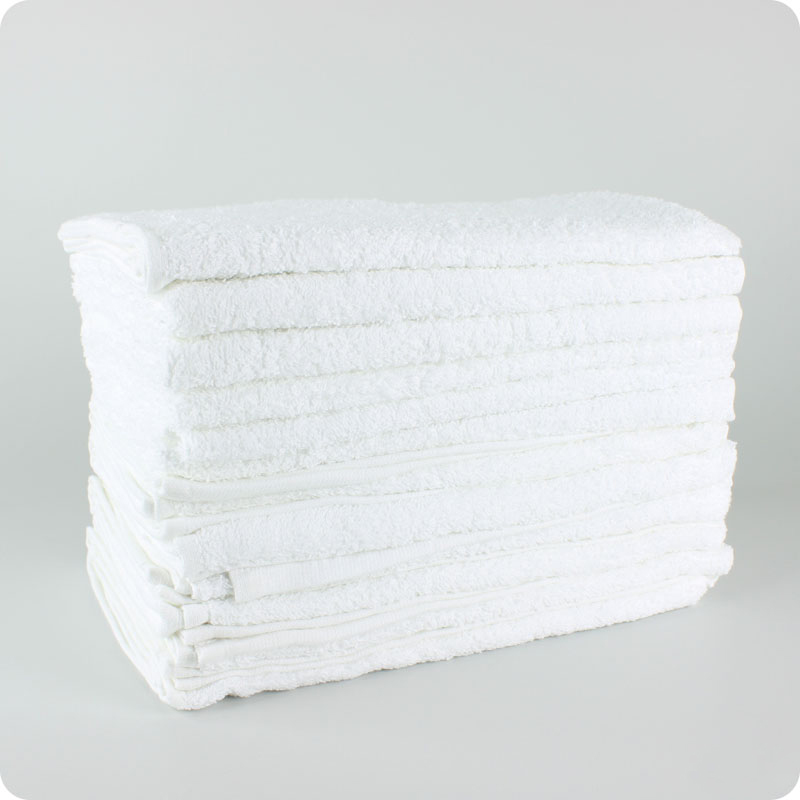
.jpg)
.jpg)
